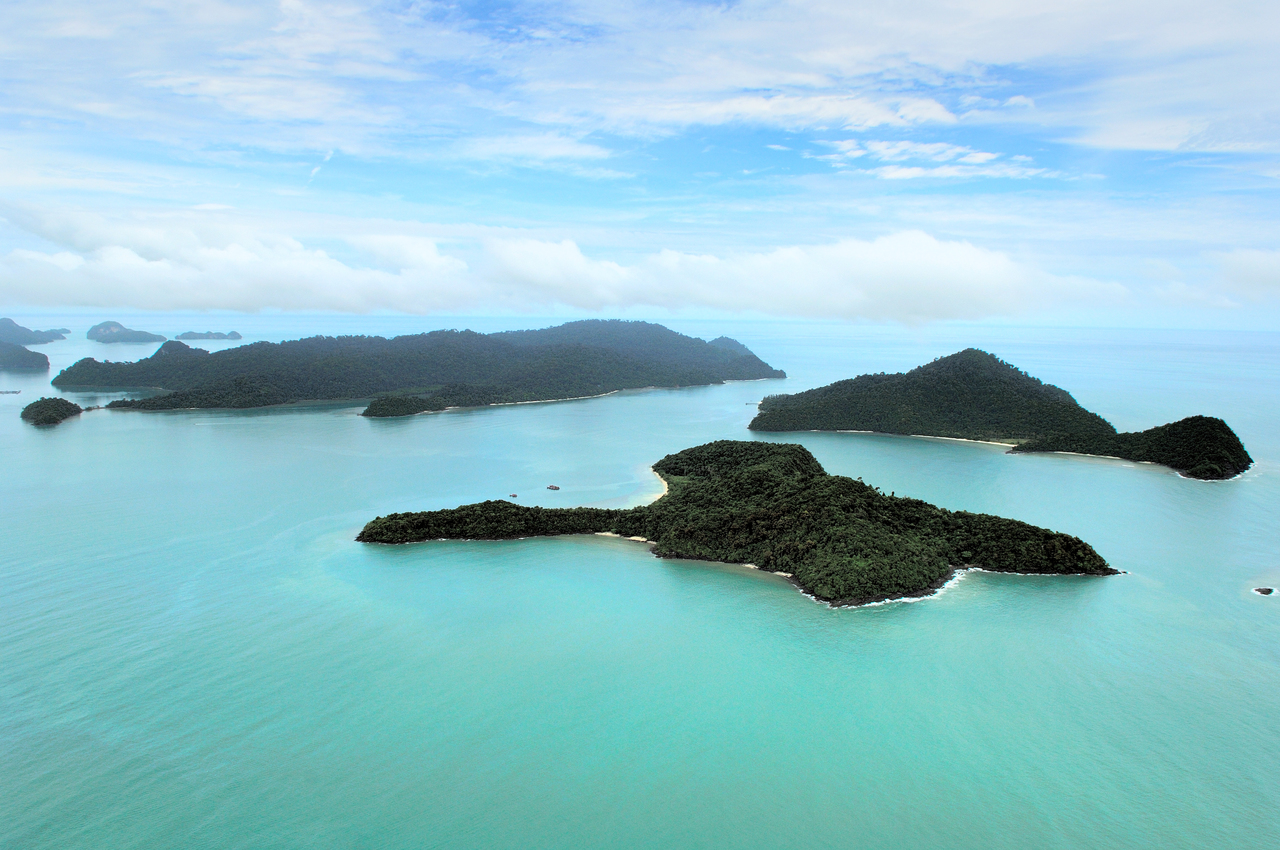
With reptiles, monkeys, green jungle and jagged cliffs, Matt Cleary hits the fairways at a Malaysian golf resort.
Langkawi Island is so lush, verdant and green – teeming with creatures and very alive, that it’s like the mystical jungle in Avatar, except instead of glowing plants and giant blue cat-people there are crab-eating macaque monkeys, ornate flying snakes and mighty monitor lizards. The island is like a living, breathing organism with species you won’t find anywhere else.
Indeed so thickly enveloped by broadleaf rainforest is Langkawi that you could be two hundred metres off shore lolling aboard Naga Pelangi – the traditional junk schooner hand-built by a German adventurer and popular for slow cruises at sunset – and be unaware that inside all that thick jungle is perhaps Asia’s most beautiful eco-resort The Datai with its spectacular 18-hole, par 72 championship Ernie Els designed Els Club Teluk Datai.
Wait … flying snakes? What?
Fear not. Unless you’re a mammal the size of a squirrel, the ornate flying snake, Chrysopelia ornata, isn’t dangerous. But its slow shimmy up bark-lined trees and gliding flight with “wings” of extended skin is but one of the truly fascinating things you can learn about outside The Datai’s front door.
Indeed, the eco-tours run by Irshad Mobarak – the Datai’s famous resident naturalist – begin immediately outside the airy reception, where he explains how prehistoric cycads breed. Mobarak, a khaki-clad dead ringer for actor Steven Seagal, hears the sounds of local birds, telling you which of the 226 species made the sound.
Crab-eating macaques? Great troupes of them trot about Ernie Els’ golf course – The Els Club Teluk Datai – a five-minute drive from the hotel. With wide fairways with fine views of the jagged, knife-shaped massif Mount Mat Cincang, from the tee it can often look like tree-lined corridors but in truth you’ve got to be a long way off to lose a ball. Or you could loft one into the water hazard at the panoramic fifth, seventh and 17th holes, with greens perched right on the Andaman Sea. Each hole has been named to reflect their tropical surrounds, including: Illusion, Macaque Manor, Nature Calling, Solitude, Harmony, Kite Flyer and Paradise Found. In 2014, the course was awarded World’s Best New Golf Course in the World Golf Awards.
It’s a gorgeous track with Cathedral feel on some holes, open and coastal on others. The hire clubs are first class with Titleist woods, forged AP2 irons and Scotty Cameron putters. The drinks cart appears as if by magic – and it’s just really good fun golf. Els has designed a course that isn’t going to cause people angst. There is not a single bunker on the course. Not a one. And you could play it again, as indeed I do.
After a fine cold beer, it’s back for a massage at The Spa – an unbelievably relaxing experience in an open, teak cabana utilising giant baths, essential oils and a soothing stream trickling nearby.
Langkawi has the highest concentration of butterflies on earth. There are 450 species across the mighty, 7.7 million-square-kilometre continent of Australia. There are 550 species on Langkawi Island, 475 square kilometres – making it naturalist’s heaven. Eagles soar through the air, diving for fish. Crabs scutter about. Monkeys scamper like they own the place.
You can view all this beauty aboard Naga Pelangi with a champagne flute in one hand and a scallop canapé in the other. Or you can just laze on the beach, which is exactly what guests do when they’re not playing golf, enjoying a spa or drinking aboard the junk.
The Beach Villas are nestled in the forest, barely visible from the water’s edge, ten metres from the edge of the sand with their own private pool, outdoor shower and dining room. They are luxurious beach huts abutting rainforest, creating a feeling that one walks from the forest to the beach and offering complete privacy, aside from the troupes of macaques that stride along the fence.
Other huts are built into the canopy on huge stilts; while some are nestled low in the forest or high in the hillside. Kerry Hill Architects preserved their vision to give the resort a primary sense of belonging to the jungle, specifically choosing construction materials in alignment with the location. It’s carved out of the jungle, but still belongs to the jungle.
At lunch at The Beach Club, the building has fully thatched cabanas and mighty circular beams wrapped with rope all built from local teak. Offshore, I spot Taurato Island, which was once a prison but is now a national park, with nearby Beach of Skulls – where bodies washed up after people had tried to escape. You can also see Thailand in the distance. With the jagged peaks of jungle and vistas through a soft salt-haze, I speculate that no one would be trying to escape here in a hurry.
Latest Articles
Don't miss the latest from Luxury Travel
